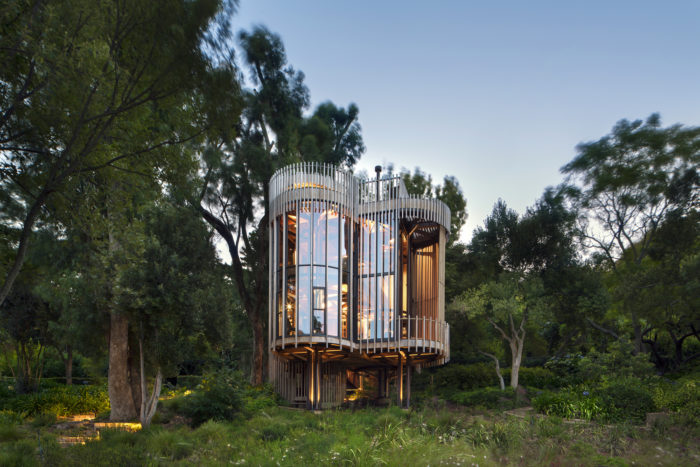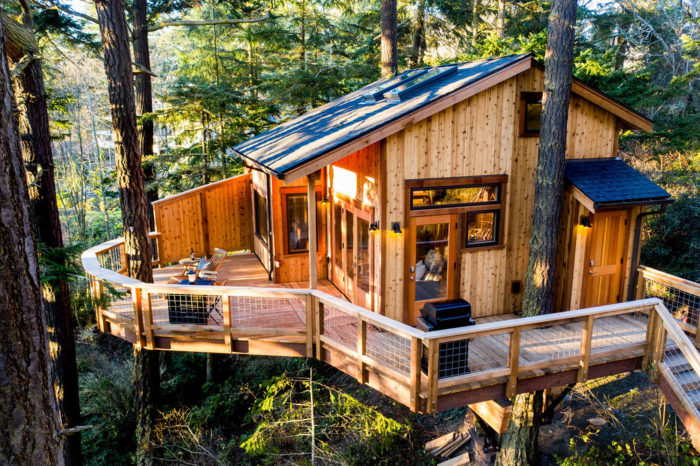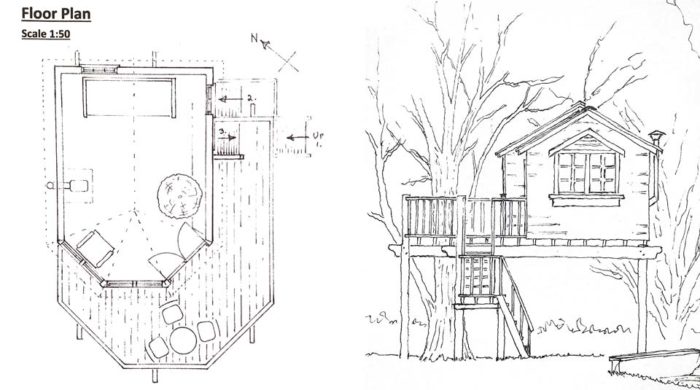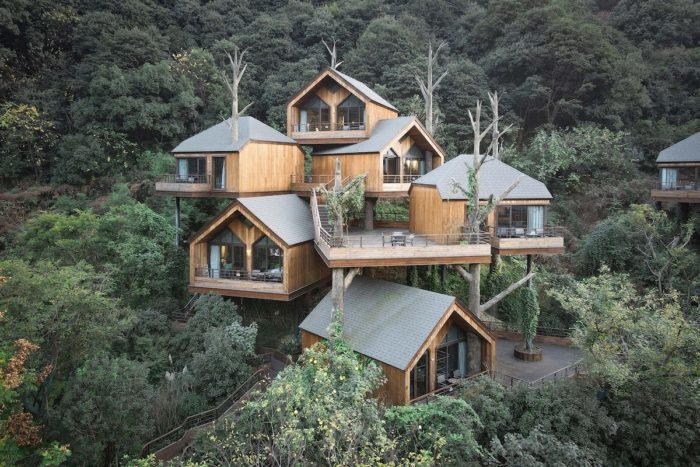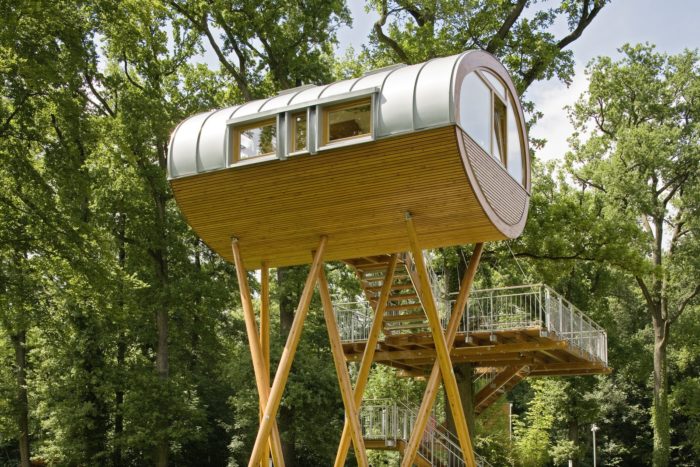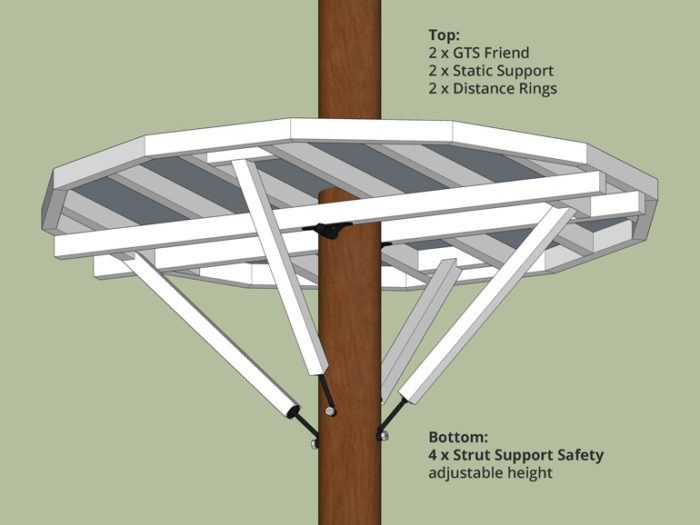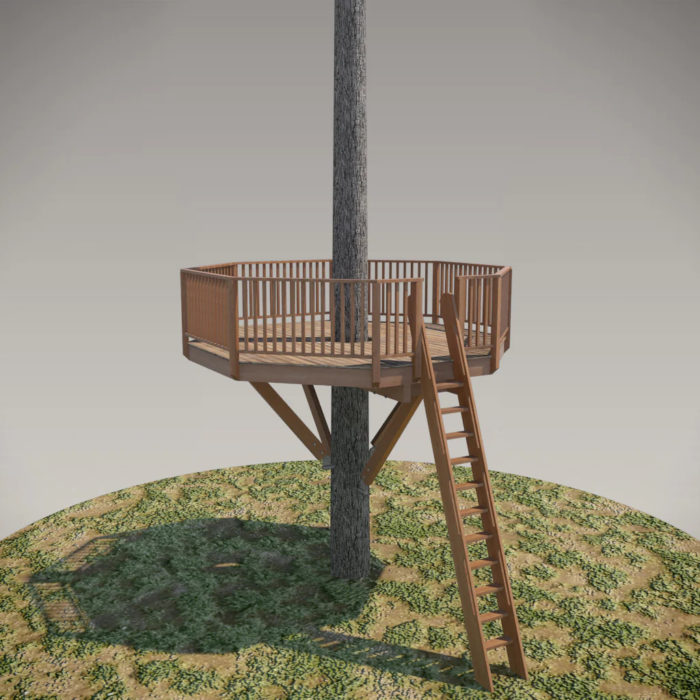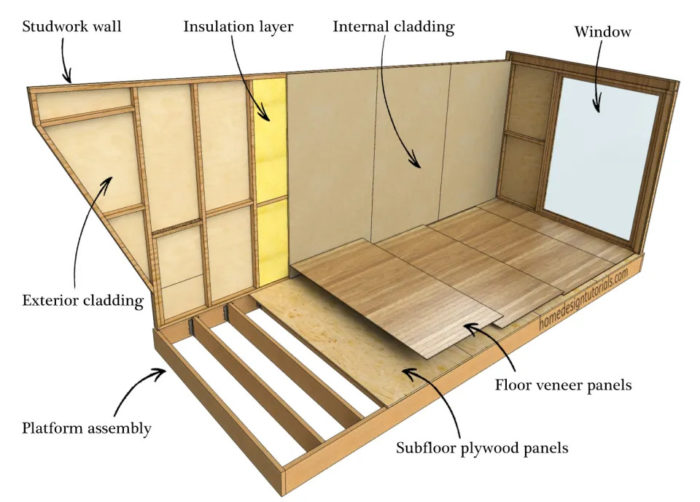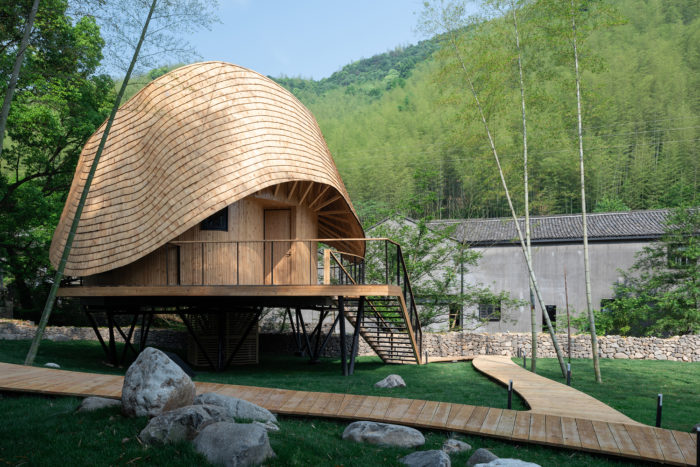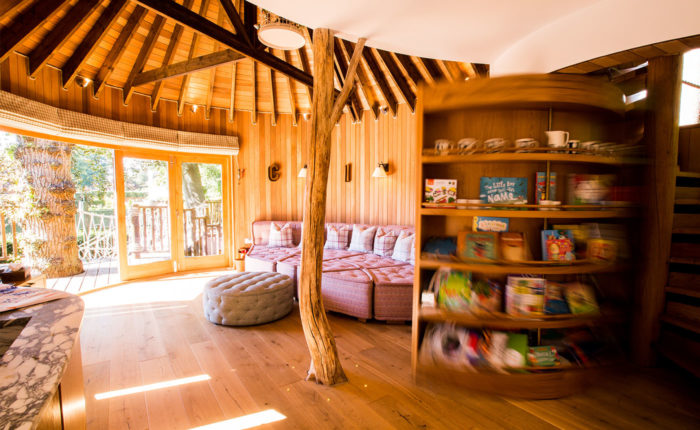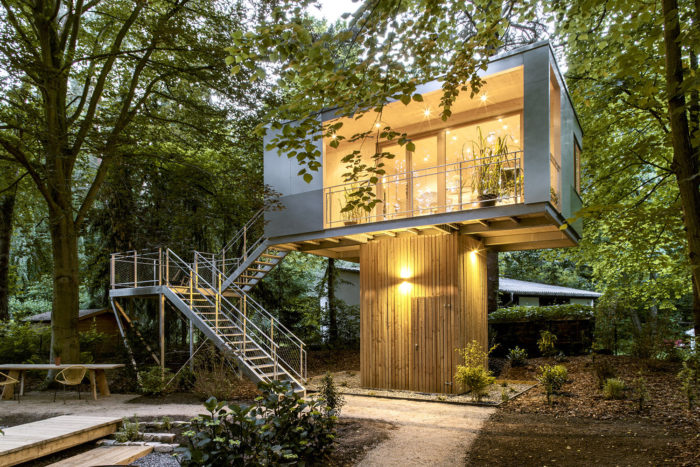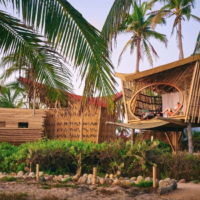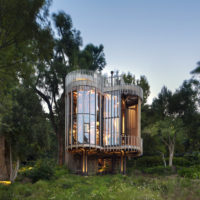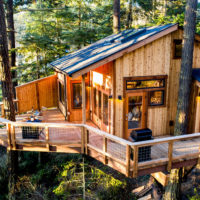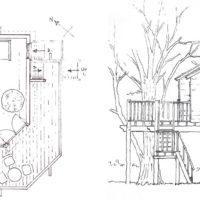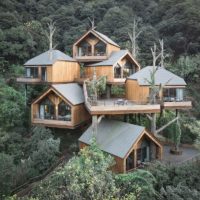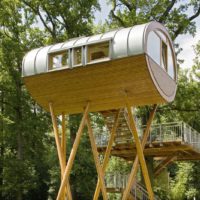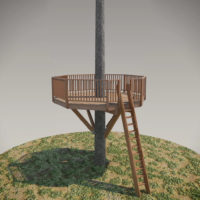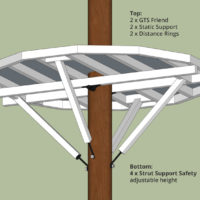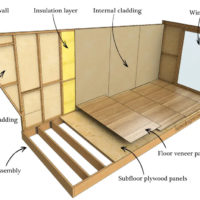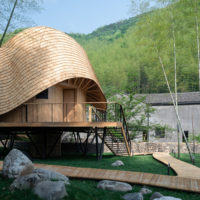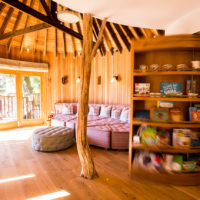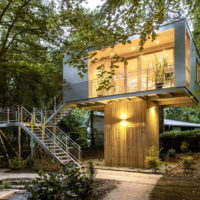Tree Houses have captured the imagination of people of all ages for generations. These whimsical structures perched amidst the branches provide a sense of adventure, a connection with nature, and a unique vantage point. Whether you’re building a treehouse for your kids, as a personal retreat, or as a creative project, it’s essential to have a solid plan and design in place.
Mastering Your Tree House
In this guide, we’ll explore 12 valuable tips for building a treehouse that is not only safe and sturdy but also a true masterpiece of tree house design.
1) Choose the Right Tree
Selecting the right tree is the foundational step in building a tree cabin. The tree’s health, stability, and size all play crucial roles in ensuring your treehouse’s safety and longevity.
– Healthy Tree: Ensure your chosen tree is healthy, disease-free, and has a robust root system. A sickly tree could weaken over time and pose a hazard.
– Sturdy Species: Tree species like oak, maple, or pine are more suitable for treehouses due to their strength and durability. Consult with an arborist if you’re unsure.
– Size Matters: Opt for a tree with a trunk diameter of at least 12 inches for stability. A treehouse’s weight is distributed through its attachment points, so a robust tree is vital.
2) Obtain Necessary Permits
Before you embark on your tree cabin project, check with your local authorities for permits or regulations. The rules regarding tree houses can vary from place to place, so it’s crucial to stay compliant.
– Zoning Regulations: Some areas may have specific zoning regulations that dictate tree houses’ height, size, and location. Be aware of these guidelines to avoid legal issues.
– Building Codes: Ensure your tree house meets all the safety requirements outlined in your local building codes. This includes structural integrity and safety features like railings and exits.
3) Plan Your Design Carefully
A well-thought-out design is essential for creating a tree cabin that looks great and functions well. Consider your tree house’s purpose and the overall aesthetic you want to achieve.
– Functionality: Determine how you will use the tree house—whether it’s a play area for kids, a relaxation spot, or even a guest room. This will influence the layout and amenities you include.
– Aesthetic Appeal: Think about the style and appearance you desire. Whether it’s a rustic cabin, a whimsical treetop castle, or a modern retreat, your design should reflect your vision.
4) Safety First
Safety should always be a top priority when building a treehouse. Ensuring that the structure is secure will prevent accidents and injuries down the line.
– Professional Inspection: Consider having an experienced arborist or structural engineer inspect your chosen tree to ensure it’s suitable for a tree house.
– Solid Foundation: Use proper tree house attachment methods like lag bolts, treehouse attachment bolts (TABs), or suspension brackets. These secure your treehouse without harming the tree.
– Railings and Barriers: Install sturdy railings and barriers around open edges to prevent falls. Check local codes for specific requirements.
5) Gather the Right Tools and Materials
You’ll need the right tools and materials to build a treehouse successfully. Be prepared by creating a comprehensive list before you start.
– Tools: Common tools for tree house construction include drills, saws, levels, wrenches, and safety gear like helmets and harnesses.
– Materials: Choose quality lumber, fasteners, and hardware. Pressure-treated wood is a good choice for durability and resistance to rot.
6) Build a Solid Platform
The platform is the base of your tree house, and it’s essential to ensure it’s level, sturdy, and securely attached to the tree.
– Leveling: Use a level to ensure the platform is even. Uneven platforms can cause structural issues and make your tree house feel unstable.
– Secure Attachment: Properly attach the platform to the tree using the chosen attachment method. This is the foundation upon which the rest of your tree house will be built.
7) Frame and Floor Construction
With the platform in place, you can start framing the walls and constructing the floor. This is where your tree house design begins to take shape.
– Frame Considerations: Ensure your frame is securely attached to the platform and follows the design plans. Check for squareness and plumb to maintain structural integrity.
– Flooring: Use weather-resistant flooring materials to protect your tree house from the elements. Consider adding insulation for year-round use.
8) Choose the Right Roof
Selecting the appropriate roofing material is crucial for weatherproofing and adding to the aesthetic appeal of your tree house.
– Roofing Materials: Options include shingles, metal roofing, or even a living roof with vegetation. Choose materials that complement your tree house design and provide adequate protection from rain and sun.
– Proper Pitch: Ensure your roof has the right pitch to allow for proper drainage and prevent water from pooling.
9) Electrical and Plumbing Considerations
Depending on your tree house’s intended use, you might want to add electrical and plumbing features. This step requires professional expertise to ensure safety.
– Electrical Wiring: Hire a licensed electrician to install wiring and outlets. Ensure all electrical components are up to code and safe.
– Plumbing: If you plan to include a bathroom or kitchenette, consult a plumber to handle water supply and drainage systems.
10) Interior Design and Finishes
The interior of your tree house is where you can get creative with decorations, furnishings, and finishes to match your design vision.
– Space Optimization: Make the most of your limited space by choosing furniture and storage solutions that fit the scale and purpose of the tree house.
– Lighting: Use proper lighting to create a cozy atmosphere. Battery-powered or solar lights are practical choices for tree houses.
11) Regular Maintenance
Tree houses require regular maintenance to ensure longevity and safety. Create a schedule to address issues promptly.
– Inspect for Damage: Regularly check for any signs of damage, including rot, insect infestations, or structural issues. Fix problems promptly.
– Refinishing: Depending on the materials used, you may need to refinish or repaint the exterior to protect it from the elements.
12) Respect Nature
Finally, remember that your tree house is a part of nature. Respect the tree and the environment around it.
– Minimize Impact: Avoid harming the tree by using attachment methods that allow for natural growth. Trim branches carefully if necessary.
– Leave No Trace: Clean up after your tree house project and minimize your impact on the surrounding ecosystem. Dispose of waste properly.
In a Nutshell
Building a tree house is a dream come true for many. It’s a chance to create a magical space to escape, play, or simply connect with nature. Following these 12 tips for building a tree house, you can ensure that your project is safe, sturdy, and a true masterpiece of design. So, grab your tools, choose the perfect tree, and embark on a journey to create your treetop oasis.
- Bamboo Treehouse Village. © Kevin Steele, Courtesy of Playa Viva.
- Tree House l Malan Vorster Architecture Interior Design. © Adam Letch
- © Nelson Treehouse
- © Forest Wild Treehouses
- © My Modern Met
- © Markus Bollen
- Courtesy of Be in a Tree
- © The Treehouse Shop
- © Home Design Tutorials
- Treewow O – A Tree House of Curved Round Roof l MONOARCHI. © Hao Chen
- Courtesy of Blue Forest Treehouse
- Urban Treehouse l baumraum. © Laura Fiorio


